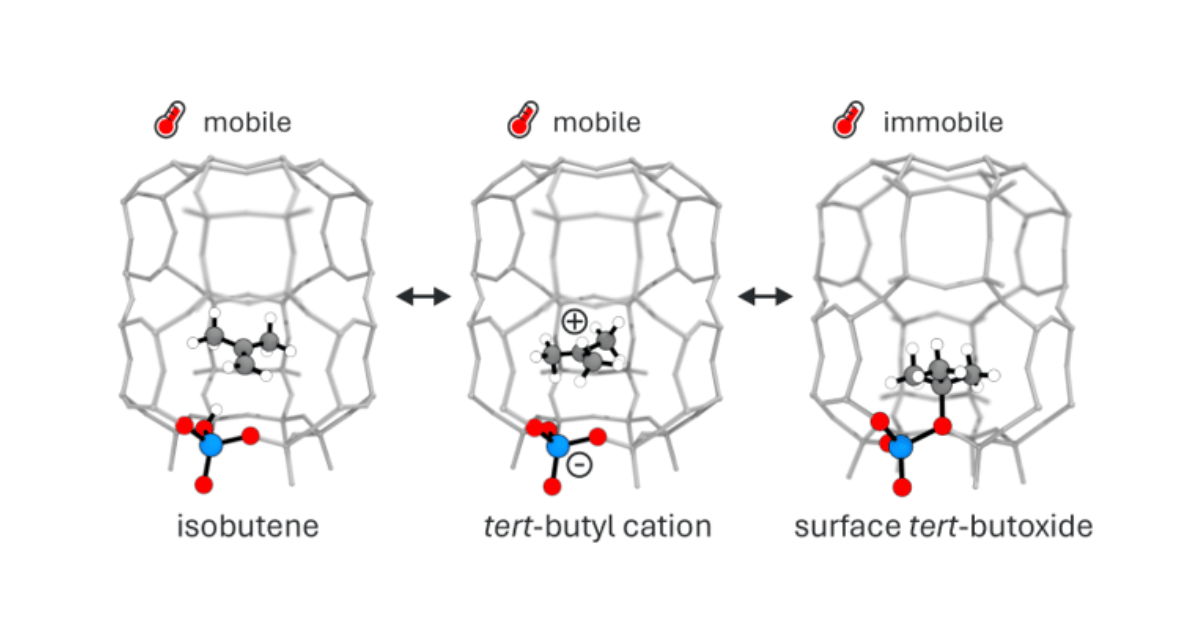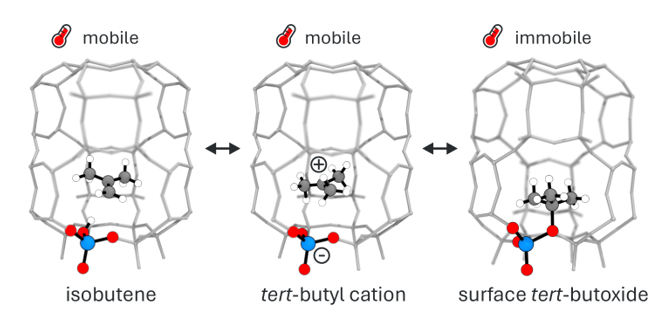
Accurate Reaction Free Energies in Zeolite Catalysis with MeluXina
Massimo Bocus, Sander Vandenhaute, Veronique Van Speybroeck

INTRODUCTION
Scientists at Ghent University are embarking on an ambitious computational journey to unlock the secrets of zeolites – remarkable porous materials that play a crucial role in many industrial processes, from oil refining to the sustainable production of commodity chemicals. Led by Professor Veronique Van Speybroeck, the team aims to use cutting-edge computer simulations to predict which of the hundreds of possible zeolite structures would work best for specific chemical reactions. Their focus is on understanding how the zeolite framework affects the reaction outcome and kinetics under realistic operating conditions (high temperatures and pressures). By combining highly accurate quantum mechanical calculations with advanced machine learning techniques, they hope to achieve a level of precision in their predictions that was previously thought impossible. This groundbreaking approach could revolutionize how we design and select catalysts for cleaner, more efficient industrial processes.
CHALLENGES
A key challenge in the computational characterization of reaction free energies – that is, the energetic barrier a molecule must overcome to react – is to estimate both the enthalpic and entropic contributions to a sufficiently accurate level. Zeolite-catalyzed reactions can exhibit a high degree of complexity from a quantum mechanical point of view, and the computational cost to perform the necessary highly accurate calculations is enormous. In addition, because many molecules are free to move around throughout the zeolite pores, it is necessary to explicitly incorporate their increased mobility into the simulation pipeline. Practically, this entails the use of molecular dynamics (MD). One can imagine MD as a movie in which the molecular movements are followed in time. To know the positions at the next frame, one first need a highly accurate quantum mechanical calculation to obtain the energy of the current frame. This calculation can take up to hours but, since hundreds of thousands of steps are needed to obtain MDs of sufficient length, combining the two was thus far impossible. To overcome this, the researchers employed highly efficient machine learning (ML) models which can optimally accelerate the simulations. In this sense, the project is one of the first catalytic studies in which high-level quantum mechanical calculations are combined with state-of-the-art ML models to study catalytic activity.

An example of an investigated zeolite-catalyzed reaction, where a mobile species (isobutene) is first protonated by the zeolite to form a tert-butyl cation which subsequently binds to the framework to give a surface tert-butoxide species.
USING MELUXINA
High-level quantum mechanical calculations are enormously expensive, and they cannot be performed on commodity hardware – even university clusters often do not possess the required infrastructure. MeluXina is one of the only clusters in Europe which provides a sufficiently large number of high-memory nodes, i.e. nodes with one or more terabytes of RAM. These allow the researchers to achieve the desired accuracy in their calculations, in the framework of a research-oriented EuroHPC Regular Access Project. In collaboration with the technical support team from MeluXina as well as software developers from the University of Zurich, they succeeded in executing the required calculations. The obtained results were subsequently integrated in the training and fine-tuning of equivariant graph neural networks (EGNNs); a state of the art ML architecture which can be used to predict the quantum mechanical interaction energy of catalyst system. With EGNNs, the researchers can perform very long simulations to characterize the mobility and reactivity of the various species, and this is essential to quantify entropic contributions to the free energy to within chemical accuracy, and they are therefore an essential component in the study.
IMPACT
The simultaneous estimation of highly accurate entropic and enthalpic contributions is a long-standing challenge in computational chemistry. With this project, the team of Prof. Van Speybroeck succeeded in building a computationally tractable simulation pipeline which approaches chemical accuracy for complex catalytic processes. Importantly, the approach is widely applicable towards a broad range of catalysis applications, and it therefore represents a very promising general approach. The team has already started to apply the methodology in several other applications situated in both materials science and chemistry, while the method is still being developed and improved. Ultimately, the project’s ambition is to transform the role of computational models from descriptive research analysis tools into powerful predictive machinery that can be effectively used in industry.
https://chemrxiv.org/engage/chemrxiv/article-details/668d2d8e5101a2ffa8dd39ca


